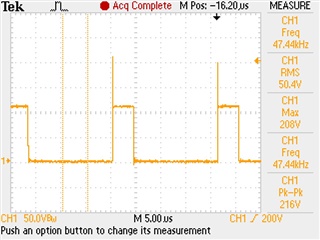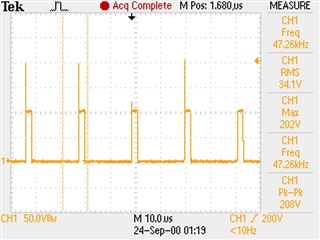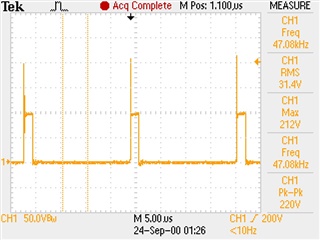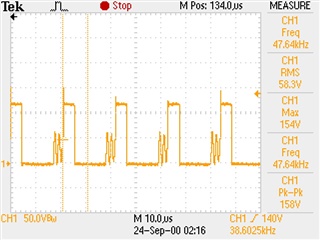Other Parts Discussed in Thread: UC3845
Hii,
we are using UCC24612 with SUM90142E-GE3 for flyback power supply output voltage 30V,10A with UC3845 pwn ic switching at 50KHz
i am using UCC24612-2 version,
Below issue i face
i) At startup if a connect some load(checked at 1.5A,3A) to smps output, and turn on power supply, the SR mosfet and UCC24612 gets damaged ,
SR mosfet Drain and source gets shorted
and input mosfet which is 600V mosfet also burns,
ii) if a turn on power supply and when 30V appears on output, if then i connected load then there is no problem, i checked upto 8A for few minutes, and there is no problem in SR mosfet and uCc24612,
the problem comes when i start with a load , the design is previously working design in which i am trying to replace output rectifier with SR rectifier,
can anyone please given any insights into this problem, where could the the problem





